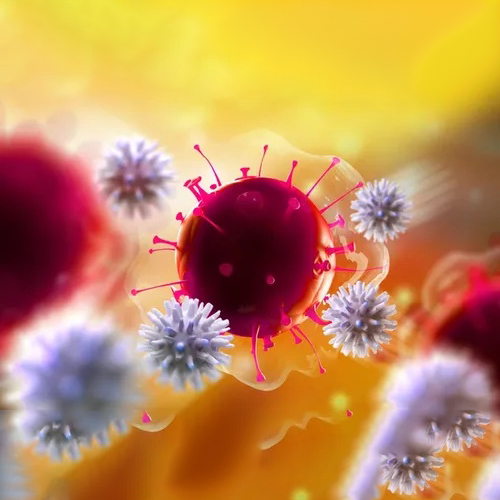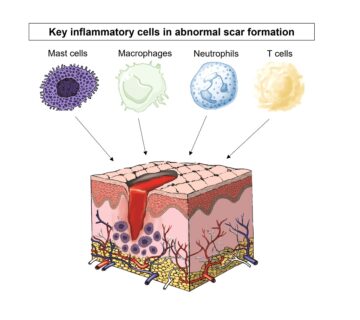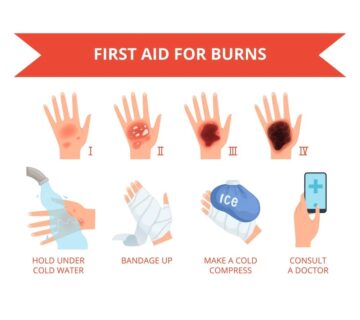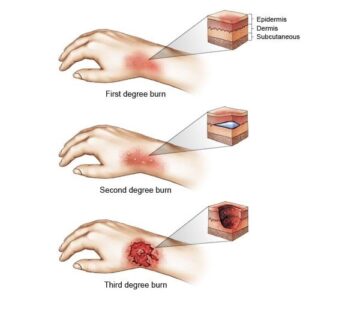Definition of infection
According to the definition, the entry, growth and development of microbes or parasites in a wound or an organ of a living organism (host) is called an infection. The microbe uses the host’s body as a source and place of growth and reproduction and often causes disease. The cause of infection can include all kinds of parasites, viruses, prions, bacteria, viroids and fungi. In fact, infection means that the pathogenic organism in the human body, in addition to feeding and multiplying, produces toxic substances and makes the person sick.
Infection is the most common complication of burns
Burns can have many complications, of which infection is the most common. The host’s body naturally begins to fight against the foreign and infectious agent through the immune system, and inflammation occurs in the early stages. By knowing the types of infections and how to prevent them, you can avoid infections and side effects. The way the infection spreads and its effect on the human body depends on the type of virus. The immune system is a powerful barrier against infectious diseases. However, pathogens can sometimes bypass the immune system’s ability to fight back and cause infection. Some pathogens have little effect and others produce toxins or inflammatory substances that cause a negative response in the body. This variation means that some infections are mild and barely detectable, while others can be severe and serious.
Symptoms of various infections and ways to prevent them
The symptoms of various types of infections and ways to prevent them depend on the pathogen and also the location of the infection. Some pathogens target skin cells and cause warts. Some other pathogens target a wide range of cells and lead to different symptoms. People infected with this bacteria often experience inflammation, redness, fever, heat, and pain not only in the lymph nodes but also in the affected areas. However, viruses and bacteria can also cause serious skin diseases. Prevention is the best way to fight disease. Accidents can be prevented by observing the principles of caution, health and safety during work. But it is possible to strengthen the body’s immune system by following the diet and eliminating stress and mental anxiety, sports activities and lifestyle changes.
Observation of infection and its complications
Also, when the disease occurs and the complications of the infection are observed, you should immediately go to the medical center; And he finished taking the medicine and treatment. Antibiotics, especially natural antibiotics, are the final choice for bacterial infections. There are many natural antibiotics around us. The best natural antibiotics are: garlic, honey, onion, cabbage, ginger, cinnamon. But in case of acute infections, it is necessary to go to the doctor and receive the appropriate treatment according to the diagnostic tests of the body condition.
The body’s defense system against infection
The body’s defense system against infection against microorganisms as infection-causing agents is equipped with defense mechanisms and important barriers as follows: The skin is the first defense barrier of the body, which has a special pH and fatty acids and lysozymes. Mucous surfaces: the stomach functions with changes in pH and the upper respiratory system with continuous movements of the cilia and the special combination of salivary secretions and different channels of the body. Immune system: the specific and non-specific functions of the defense system play their role outside the body. Many and various factors are able to weaken or destroy these mechanisms and pass through the body’s natural barriers. Any of the above levels lead to Certain diseases will occur.
Ignoring the signs of infection
Failure to pay attention to the symptoms of infection and failure to see a doctor and treatment on time will cause all these defense barriers to be broken and the immune system to become weak; that it is difficult to control the infection even after starting the treatment; And different parts of the body become sick and weak under the influence of infection, and the body’s ability to deal with the disease is reduced. Negligence in treating the infection will cause severe fevers, convulsions and liver damage. In fact, the most common cause of fever is infection of body parts. When the body gets an infection, it controls the activity of microbes by increasing the temperature. This increase in temperature is done by the effect of pathogenic factors in the hypothalamus; And if the treatment is not done on time, the person may have convulsions due to a sharp increase in fever and even face the risk of death.
Fever is a sign of infection
Fever means an increase in body temperature and is a clear sign of a problem. If the body temperature is higher than 37.5 and lower than 37.9 degrees, it is called mild fever. Also, failure to treat abdominal infections and other infections quickly can increase the possibility of liver infection. The liver is also responsible for cleaning harmful substances such as chemicals. And if it is damaged, many vital processes of the body will be disrupted and the person will not be able to cope with the disease.
Complications of burn infection
Possible complications of burns can include things like pneumonia, urinary tract infection, respiratory failure, and other similar factors. In urinary tract infection, a part of the kidney is destroyed or causes blood pressure and kidney failure. This infection is caused by microbes in the digestive system. If the person does not go to the doctor to treat the wound, this infection can affect other parts of the body as well. and lead to serious complications. Another of these complications is cellulitis, which causes infection to enter the deeper layers and tissues of the skin. And it can cause swelling, redness and pain in the affected area, as well as other symptoms such as fever, dizziness, nausea and vomiting. Another complication of not treating the infection is osteoporosis, the symptoms of which include pain, redness, and swelling in the infected area. Fatigue and fever are also other symptoms.







بدون دیدگاه